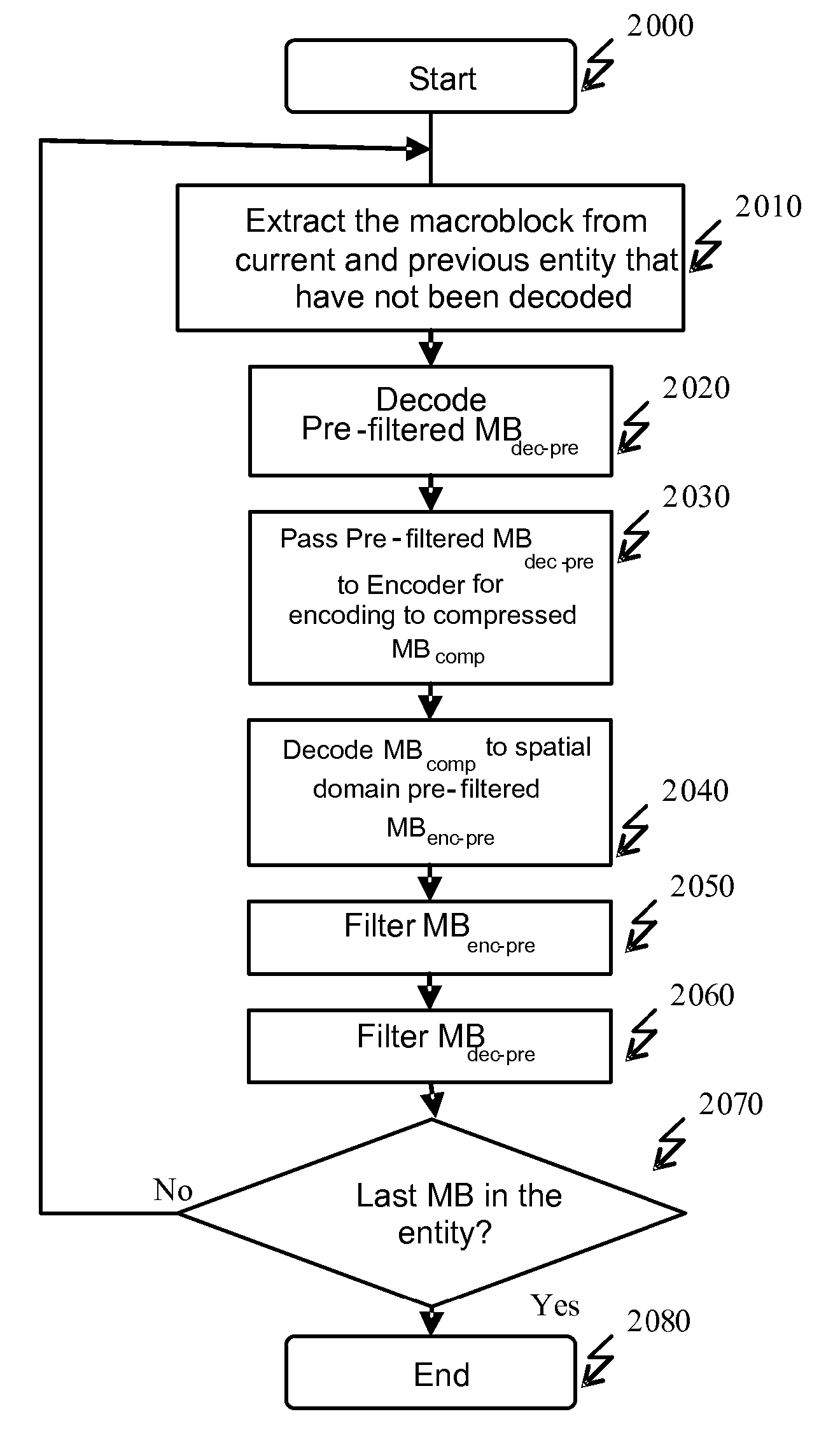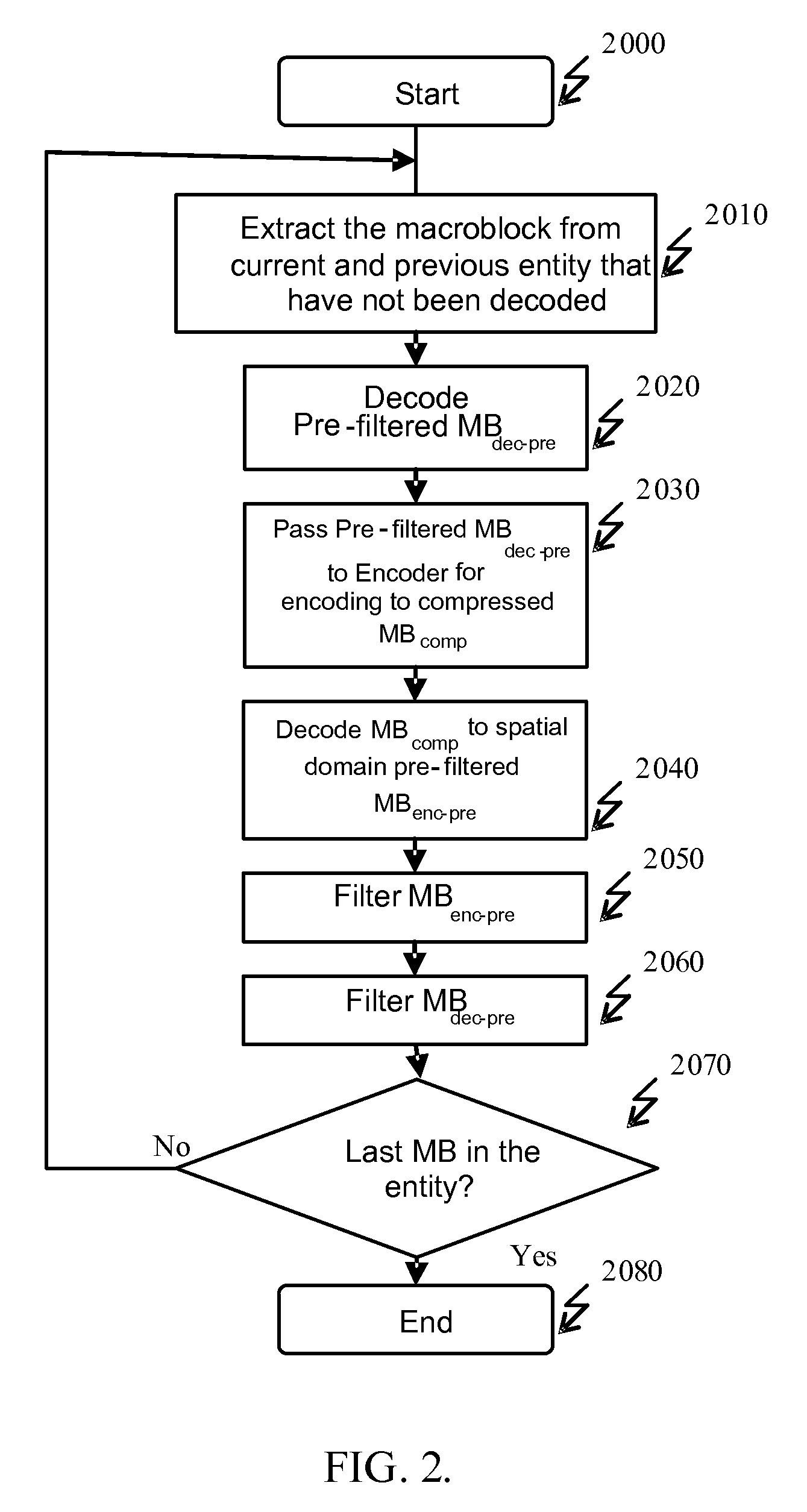Method and apparatus for compressed video bitstream conversion with reduced-algorithmic-delay
a compressed video and algorithmic delay technology, applied in signal generators with optical-mechanical scanning, color televisions with bandwidth reduction, etc., can solve the problems of delay caused by the process of fully decoding, media stream units can be too large or too small for efficient transmission over designated networks, and achieve the effect of reducing algorithmic delay, improving conversion video quality, and pleasant user experien
- Summary
- Abstract
- Description
- Claims
- Application Information
AI Technical Summary
Benefits of technology
Problems solved by technology
Method used
Image
Examples
second embodiment
[0076] In the present invention, the reduced algorithmic delay video rate converter allows a macro-block that is partially decoded to spatial domain and is not filtered fully by the in-loop filter to be output for re-encoding. The apparatus includes two in-loop filters, one is in the encoder, and another is in the decoder. It is possible that the macro-blocks that decoded from the rate converter look similar, regardless of whether it is filtered by the in-loop filter in the decoder before being encoded by the encoder in the rate converter. In a specific embodiment, two situations are typically satisfied. Firstly, the two in-loop filters are symmetrical, i.e. they perform exactly the same operation given the same input. In the preferred embodiment, the same logic or procedure is used for the filtering in the decoder as well as the encoder. Secondly, a similar amount or more filtering is performed in the encoder as in the decoder. In the H.264 de-blocking filter, this means that the t...
first embodiment
[0091] Full Video Decoder 12100: This includes an Entropy Decoder 12010, inverse transform and inverse quantization module 12020, memory storage 12070 for storing partially decoded blocks, memory storage 12090 for fully decoded blocks. Inter mode compensation unit 12040 which includes a motion compensation function, Intra mode compensation unit 12030. The partially decoded block storage and fully decoded block storage can occur in the same consecutive memory space. The in-loop filter 12080 uses the information of the blocks in the fully decoded block storage for de-blocking operation. A few possible embodiments to this aspect of the invention are considered here. In the first embodiment, the partially decoded block without any filtering is sent directly to the encoder. In another embodiment, the partially decoded block is filtered by the in-loop filter using only previously received macro-blocks. In yet another embodiment, the partially decoded macro-block that is filtered using the...
PUM
 Login to View More
Login to View More Abstract
Description
Claims
Application Information
 Login to View More
Login to View More - R&D
- Intellectual Property
- Life Sciences
- Materials
- Tech Scout
- Unparalleled Data Quality
- Higher Quality Content
- 60% Fewer Hallucinations
Browse by: Latest US Patents, China's latest patents, Technical Efficacy Thesaurus, Application Domain, Technology Topic, Popular Technical Reports.
© 2025 PatSnap. All rights reserved.Legal|Privacy policy|Modern Slavery Act Transparency Statement|Sitemap|About US| Contact US: help@patsnap.com



